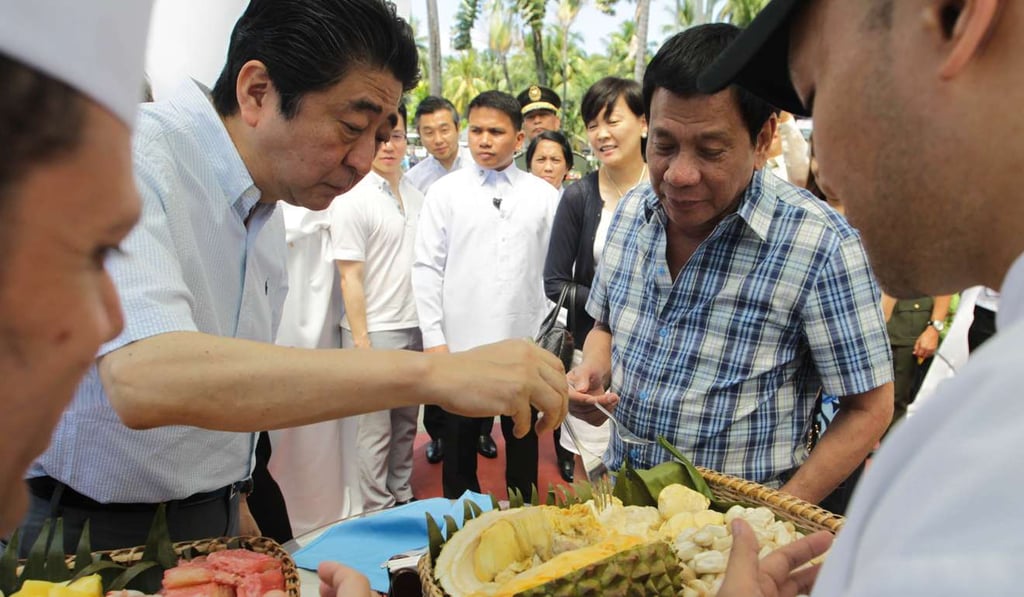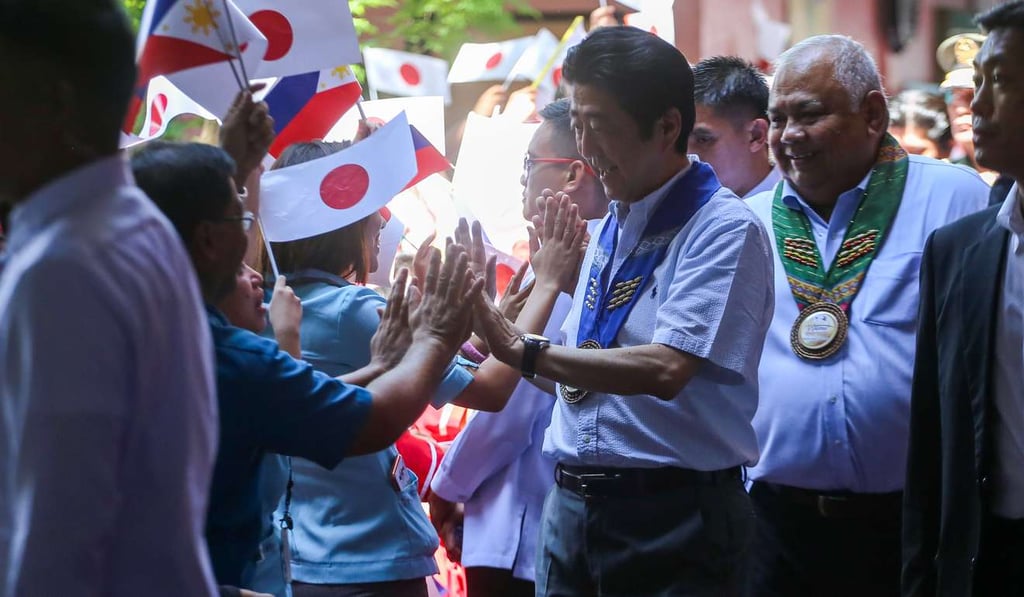Duterte plays a dangerous game in the South China Sea
Philippine president’s courting of China as he pivots away from the United States could reap dividends – or a military coup

When Japanese Prime Minister Shinzo Abe visited Rodrigo Duterte’s family home in Davao City last month, it was more than just the shared durian that suggested the Philippine president’s radical new “independent foreign policy” was bearing fruit.
While the pair indulged in a day of dressed-down diplomacy – Abe in a white short-sleeved polo shirt, Duterte in an untucked flannel shirt and leather shoes with no socks – and photo opportunities that included the Japanese leader visiting Duterte’s bedroom and naming a rare Philippine eagle “Sakura” (in reference to Japan’s fabled cherry blossom), observers were quick to assign deeper geopolitical significance to what was otherwise a laid-back affair.

The headline act of that day was Abe’s parting gift – a pledge of a US$9 billion aid package and an offer to help Duterte in his trademark war on drugs and terror.
Most analysts saw this as a reflection of Abe’s determination to match recent largesse from China, which in October pledged US$15 billion in investment and in January agreed to cooperate on 30 projects worth US$3.7 billion. To Duterte supporters, it was proof that his diplomatic pivot away from the United States and into the arms of China and Russia was starting to pay off.
But if Duterte’s pivot – which many see as an effort to play the Philippines’ rival suitors off against each other – has been reaping some early dividends, some experts warn it has the potential not only to undermine US hegemony in the region, but jeopardise the Philippines’ control of its natural resources and even threaten Duterte’s own grip on power.
